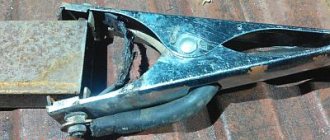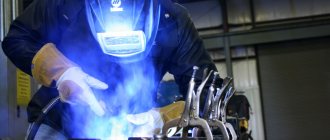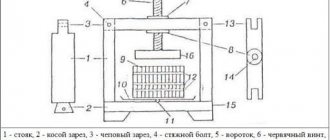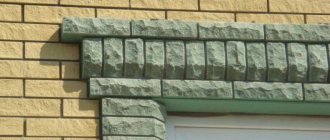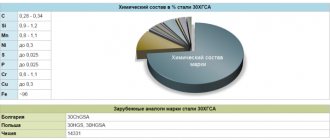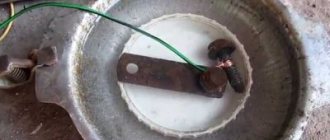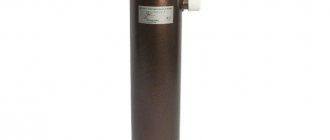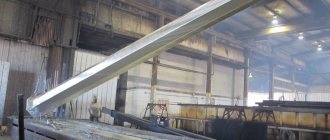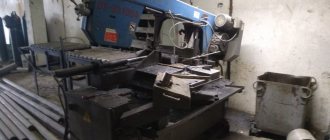When constructing fences on a metal frame, a welding machine is usually used. It helps attach the elements to each other. But the equipment is not available to everyone, and not everyone knows how to use it. Many owners of country houses prefer not to build a fence without welding, but using various fasteners.
Wicket design without welding
Preparing for work
First, you should evaluate the advantages and disadvantages of fastening a fence and gate without welding. The advantages include:
- affordable price;
- no risk of rust;
- quick and easy installation;
- aesthetic appearance;
- there is no need to form even the simplest strip foundation, supports carefully concreted in the pits are quite sufficient;
- large selection of shades;
- choice of textures, shapes, you can choose canvases that imitate wood, brickwork, etc.;
- the ability, if desired, to make a product decorated with forging;
- the fence will carefully hide the personal life of the owners from prying eyes.
The main disadvantages are:
- requirements for tightness of seam processing;
- the outer layer does not respond well to mechanical stress; if damaged, corrosion begins to progress.
Territory marking
First you need to measure the total length of the fence. This simplifies the planning and calculation of materials. The easiest way to do it is this:
- Pegs are placed in the corners of the site. But the border is not always exactly smooth, without kinks. This means you will need to drive pegs into the turning points. To begin with, it is recommended to check the area plan so that in the future there will be no conflict situations with neighbors or cases of violation of the law.
- Stretch the rope between the pegs, placing it 10-20 cm from the ground, paying attention to the tension force. After completing the manipulations, the length of the string is measured with a tape measure - this is the length of the future fence.
Selection of corrugated sheets
To select corrugated sheeting, you first need to look at the landscape, relief, and climate. When the fence is of small height and located in an area with little wind, then material marked C-8, C-10 is sufficient. But for a high fence in an area with frequent gusts of wind, for example, in open space, sheets C-14, C-15, C-18 are required. When increased strength is needed, it is better to give preference to S-20 or S-21.
To figure out exactly which material is suitable, it is not enough to know the brand. It is important to take into account the features. All 1.25mm thick sheets are cold rolled so the overall width is reduced due to deflections. The higher the profile, the narrower the sheet.
This will not be felt on a separate element, but in a fence 50-100 m long it will be noticeable. It requires more sheets with high ribs and fewer with low ones. Considering the difference in price, costs increase impressively. It is necessary to calculate the width of the spans so that the overlap is as minimal as possible - just a wave. It should not be constructed end-to-end.
Choosing a coating for profiled sheets
Corrugated sheeting is a complex structure with many layers. Everyone plays an important role. The maximum effect can be achieved with a combination of using high-quality sheets and high-quality flooring. If one of the components turns out to be of poor quality, the result will be bad in any case.
The main types of coatings are:
- Aluzinc is a chemical-based coating, a mixture of zinc and aluminum, has a presentable appearance, and is often used for industrial fences. Aluzinc is painted on top with oil and acrylic paints for metal.
Aluzinc
- Zinc is the most unreliable and affordable sheet, made from galvanized steel. It is rarely used for garden areas and park areas. It is actively used for industrial enterprises and warehouses. The sheets are not very presentable, but they are very strong and durable.
- Polyester - this type of corrugated sheeting is best suited for a suburban area or cottage. It tolerates precipitation well, exposure to chemicals, and solvents. Splashes and stains are washed away well by rain and under the pressure of water. The gloss looks neat and clean.
- Pural, plastisol - a more resistant sheet to environmental conditions, costs more than others. It is usually used for luxury construction. The surface will look new throughout the entire period of operation, several decades.
Decorating Tips
The constructed structure must be painted to minimize the impact of the external environment. But before covering with enamel, the gate must be primed.
Use regular primer for metal and nitro enamel for iron products. A simple brush or miniature roller is used as a coating application tool.
Before coating with primer, the doors should be wiped with a rag soaked in acetone or gasoline to degrease.
Gates and fences painted before installation
There is another option. We buy aerosol enamel at the flea market for application to rusty surfaces by spraying and without priming. Then we simply treat our product with this aerosol. In this case, you must follow the instructions written on the cylinder.
The gate can be painted both before and after hanging it from the fence - the choice is up to the owner. The difference is that when processing surfaces after installation, accidental coloring of adjacent elements is possible.
Gate with attached iron sheets, painted
It is not worthwhile to coat the parts separately before assembling the sashes: it is possible that any of the blanks will later have to be cut in place, and then the paint consumption will be too large.
You can also attach galvanized sheets of corrugated sheets to gates made from a profile pipe with self-tapping screws, if the fence has the same appearance. Or there is an option to attach iron sheets and paint the entire product.
Forging elements
When you want to make a gate a beautiful design solution, it is enough to add forging elements to it: various rings, twisted parts, patterns from rods. It is impossible to make such blanks yourself.
Example of a gate with welded forging elements
But they can be ordered at any forge or bought at a construction hypermarket, and then welded to your gates in the planned locations.
Attaching the forged products to the sashes is the last operation before painting and hanging.
Material calculation
Typically, craftsmen recommend installing gates of standard sizes: 100 cm wide and 200 cm high. The exact height level is often selected arbitrarily, taking into account the height of the gate and the fence itself. In addition, there are different designs for the frame of the gate - the volume of material spent depends on this parameter.
For supports, it is better to choose metal profiles with a square cross-section of 60×60 mm, at least 2 m in length. Instead of profiles, you can install pipes with an equal diameter. An additional option is timber, but the tree has a high risk of rotting and needs repair work soon.
The approximate distance between the pillars is 3 m. The distance between the two pillars at the corners multiplied by the span length is the number of pillars required. The height of the pillar will be the height of the corrugated sheet and another 1 m margin for stability in the ground.
A metal profile is required for the crossbars, size 40×20 mm, 2 mm thick. It is ideal when the length of the profile is equal to the length of the span, but in reality this is a rare coincidence, so the excess size will need to be cut off.
Material calculation
When the height of the future structure exceeds 2 m, then 2 rows of crossbars are made. If more, you need an additional row for reliability and strength.
The corrugated sheets are 0.5 mm thick, the wave height is about 20 mm. This will help the fence to successfully withstand strong gusts of wind. The sheets are not placed end-to-end, but always overlapped into a wave.
Related video: how to make a gate from a profile pipe
The gate must be maintained annually. Every spring it is necessary to check the condition of welding seams, wear of hinge elements, and the integrity of the paintwork. Make repairs if necessary. If you make a product with soul and care, and don’t forget to take care of it, then it will last on your site for a very long time.
- Author: Vladimir Molotilov
I live in Tyumen, worked as an engineer in the construction industry, but at the behest of my soul I am a writer. Therefore, I write with pleasure on construction and repair topics. Rate this article:
- 5
- 4
- 3
- 2
- 1
(0 votes, average: 0 out of 5)
Share with your friends!
Mounting supports
To erect a fence, the height of which will be 2 m, on ordinary soil, you will first need to prepare pillars 3 m long. They are dug into the ground at a depth of 1 m. The work is carried out sequentially:
- Make markings, stretch the cord along the line of the future fence, securing it to the pegs installed in the corners of the turns.
- The points for installing supports are marked. Equal distances between them must be maintained.
- Dig holes up to 110-120 cm deep, lay a cushion of crushed stone. Its thickness is at least 10 cm, compact thoroughly.
- Place a post in each prepared hole, clearly checking the vertical. The stand should not give way; it should be additionally secured with supports, stones, etc.
- Mix a mixture of concrete, add a bucket of cement, 2.5 buckets of sand and 4 buckets of crushed stone, it is better if its size is 40 mm.
- Fill the supports in the holes at ground level.
After installing the support beams, 3 weeks should pass. During this time, the concrete mixture will have time to fully set and dry completely. Some self-taught craftsmen who do the work on their own do not pay attention to these timing recommendations and start work earlier, resulting in base distortions.
Calculation and necessary tools
Having decided on the standard size of the profile pipe and competently developed the drawing, you can begin to determine the need for materials, purchase purchased components, and prepare tools and equipment for construction.
A general list of materials for making gates includes:
- profile pipes corresponding to the drawing dimensions;
- sheathing material that will be attached to the canvases, for example, profile sheet, polycarbonate, wood or metal;
- hanging loops for connecting the leaves to support posts or a roller mechanism for sliding gates;
- lock and elements for fixing the panels (staples, latches, latches);
- fastening elements designed to fix the finishing material;
- decorative details (for example, forged elements), if they are provided for in the drawing;
- primer for corrosion protection and pre-painting of metal structures;
- enamel for exterior work, intended for final finishing and ensuring the presentation of the product.
Using the example of a swing gate with two leaves, we will calculate the need for materials.
Determination of the need for materials is carried out according to the sketch with dimensions
For the gate shown in the sketch you will need:
- a pipe with a profile section of 40x60 mm for the manufacture of support posts, which are not concreted, but attached to the pillars existing at the entrance. The total requirement for a pipe measuring 40x60 mm is four meters (two racks of 2 meters each);
- professional pipe 40x40 for the manufacture of two frames. Knowing the dimensions of one sash of 1.5x2 meters, it is easy to calculate the perimeter and add to it one horizontal jumper located in the middle of the sash, equal to 1.5 meters: 1.5+2+1.5+2+1.5= 8.5 meters . For two canvases you will need 8.5 x 2 = 17 meters of pipe;
- square pipe with a cross-section of 20x20 mm for the manufacture of braces that give rigidity to the canvas. Using the Pythagorean theorem, it is easy to calculate the length of the hypotenuse of a triangle with legs of 1 and 1.5 meters. The square root of the sum of the squares of the legs is 1.8 meters. For four braces you will need 1.8x4+7.2 meters of profile pipe;
- corner gussets, which are a right triangle made of steel 2–2.5 mm thick with sides of 10 cm. Each sash will need 4 gussets to ensure rigidity of the corner zones;
- corrugated sheeting for covering the gate frame. You will need 2 sheets measuring 1.5x2 meters;
The color of the corrugated sheet can be chosen to suit your taste
- self-tapping screws for fixing corrugated sheets. Dividing the length of the supporting surface of the corrugated pipe, equal to 17 m, by the step of fastening the screws (0.3–0.4 meters), we obtain 42–56 screws. It is necessary to have a couple of spare ones, so 60 pieces will be enough;
The color of the screws matches the color of the corrugated sheet
- loops with a diameter of 25 mm in the amount of 4 pieces;
- two locking clips and a latch;
- metal primer and finishing paint.
A typical set of tools for making gates, installing and concreting support pillars differs slightly.
To perform the work, it is necessary to prepare equipment and tools
The gates we are considering require the following equipment and tools:
- welding machine with electrodes with a diameter of 3 mm;
- grinder with a circle for cutting metal;
- electric drill with drills;
- hammer;
- tools for taking measurements, monitoring the accuracy of manufacturing and assembly (tape measure, level, corner);
- grinding wheel for sealing welds;
- file for removing burrs;
- brush for applying a protective coating.
Fixing the crossbars
If you do not plan to use a welding machine, then the most convenient method of attaching horizontal crossbars to vertical ones is with bolts. At the fastening points, holes of the required size are first made with a drill. The crossbars are placed so that their widest part touches the pillars.
Fixing
The crossbars are laid in several stages:
- Upper, lower at a distance of 20-30 cm from the upper, lower edge of the calculated position of the profiled sheet.
- Central - placed when the design requires it, only when the fence height is more than 2 m. It is located in the middle, perpendicular to the supports.
Connection methods
You can connect pipes using crabs, couplings, bolts, clamps for square pipes and other connecting elements, including those made by yourself.
Two profile pipes can be connected at an angle of 90° using a steel angle.
To join pipes with the same cross-section, you can make a connecting element with your own hands. For this you will need a welding machine.
It is necessary to take a piece of pipe with a cross-section larger than the cross-section of the elements being connected so that they can be inserted into it. The connecting element is cut into two parts, and a bevel is made at one end of each of them at an angle of 45°. After this, a 90° corner is welded from the two halves of the pipe folded with beveled sides.
At the edges of the resulting element, holes are made no larger than half the thickness of the profile wall, and nuts with a diameter corresponding to these holes are attached. The same holes are also made at the ends of the connected pipes.
Connecting profile pipes using fasteners can be a good alternative to hot welding for light buildings. In other cases, it is better to use welded square pipes.
Fastening the corrugated sheet
The sheets are secured with roofing screws or bolts. On crossbars and profiled sheets, you first need to drill holes of the selected diameter. Self-tapping screws can be screwed directly into the metal. To simplify the process, it is recommended to use a low-speed screwdriver.
It is required to install profiled sheets from the corner support. You need to pay enough attention to working with the first sheet. Subsequent ones are aligned to it. For a strictly vertical position, be sure to use a building level. The sheet is fixed at four points - approximately 15 cm from the edges, where the wave comes into contact with the beam. The next one overlaps the wave.
After finishing hanging the canvases, it is important to carry out additional fastening. This process is carried out by screwing in self-tapping screws every two waves along the entire length of the crossbar. If you do this less often, the sheets will bend, causing knocking and loosening of the entire fence.
If you stretch a string from the outside of the fence along the entire perimeter at the level of the crossbar, then getting into the beam will be much easier, and installation will be faster.
Clamps
If you need to fasten a profile pipe to a fence, use clamps with bolts that consist of two parts. One half is installed on the wall or ceiling. The position of the inserted pipe is fixed with the second half by tightening the bolts.
This connection is called a clip.
If the dimensions are correctly selected, installation is carried out without sagging. Adjustable clamps can be used to fasten profiles of any cross-section. During installation, it should be taken into account that the clamps for fastening the steel profile pipe must be made of the same material, and the polymer pipe must be made of plastic.
Wicket installation
You can make a gate yourself. Like the fence itself, constructed without welding, the gate is secured using mechanical fastening of the parts. For this purpose, the frame is first screwed on the reverse side. It is a rectangular profile measuring 40×20, which is mounted around the perimeter of the sheet.
In addition, the rigidity of the gate is increased by another crossbar. It is fixed inside the frame to opposite corners diagonally.
The gate is suspended using hinges; they are pre-fixed to the support. The gate leaf is attached to the hinges with bolts. The self-tapping screws for this may eventually become insufficiently reliable, and after a while the structure will begin to fail.
Options for fasteners for connecting pipes
Profile pipes are used for assembling frame structures. Pipe profiles with square, rectangular and shaped sections are not used when laying pipelines due to the fact that strong internal resistance arises in them.
To connect profile pipes without welding, various crab connectors, couplings, flanges and clamps are used. Such fastenings can be divided into two categories:
- floating, which include ties and clips;
- rigid ones are connecting crabs, flanges, fittings, brackets.
Crabs for installing pipe rolling are a system of clamps and can have a planar and volumetric connection. The first type of fastener for a profile pipe comes in three types:
- T-shaped, allowing you to connect three pipes of small diameters. Thanks to this, the installation of the structure is carried out according to a simple and understandable scheme.
- L-shaped, used for corner connection of two pipes.
- X-shaped, providing reliable fixation of three and four pipes in a cross-shaped manner in the middle of the metal structure.
Volumetric connection is ensured thanks to three- and four-part crab systems, when pipes are connected at an angle of 90° in different planes along the X, Y and Z axes.
Fitting fasteners are used to connect rolled pipes when there is a need to create bends and branches. They can mainly be found in the assembly of water supply networks, but their varieties have also found application in the installation of various metal structures and buildings made from pipe profiles. They come in several types:
- Couplings and flanges. They are used to ensure reliable joining of rolled pipes in a straight line. There are round and square sections.
- Turns and knees. Necessary to ensure the connection of pipes with different directional axes.
- Tees and crosses. Used on branches of the structure. This type of fitting allows you to connect profiles with different section sizes.
Couplings
This method of connecting straight sections without welding is used when high tightness is required on pipelines operating under pressure. Installation is carried out in the following sequence:
- The ends of the profile pipes are cut at an angle of 90⁰.
- Remove burrs, clean from dirt and corrosion.
- Mark the location of the coupling by applying it to the pipe so that the joint line is in the middle of its body. The position is marked with a felt-tip pen. The operation is repeated on another pipe.
- The ends are coated with silicone grease.
- The ends of the profile pipes are inserted inside the coupling so that the marks align with its edges. Once axially aligned, the joint is secured with coupling bolts.
Disadvantages of fences without welding
At the same time, the technology alternative to welding also has some disadvantages. In particular, these are:
- The need for additional protection from vandals (say, by grinding the heads of the screws or using screws with a non-standard head)
- In general, increased requirements for fasteners, which must provide a tight and durable connection
- The need for exact matching of fasteners to crossbars, posts and the fasteners used.
Many homeowners believe that it is impossible to install a metal fence without welding. Therefore, short-lived wooden fences are built. However, to erect a fence without welding from corrugated sheets, it is enough to use detachable types of fasteners. Since the work does not require complex equipment, even a beginner can perform all operations with his own hands. This does not require large financial expenses.
Fitting
When it is necessary to connect profile pipes with branches and bends, special fasteners and fittings are installed at the ends. There are options for indoor and outdoor connections. According to their intended purpose, they can be made in the form of:
- tees and crosses for creating branches of the same or different sections;
- angles that are installed at turns and elbows if you need to change the direction of the pipeline;
- couplings for joining straight sections.
Fittings are assembled in the following order:
- crimp nuts are put on the ends;
- install clamping, pressure and sealing rings;
- then put on the fitting;
- the parts are fastened by tightening the nuts at both ends.
